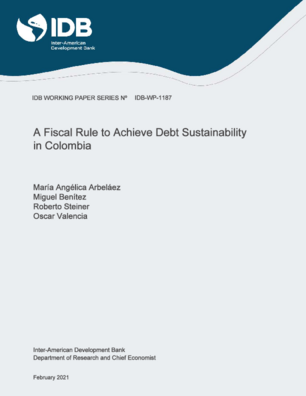A Fiscal Rule to Achieve Debt Sustainability in Colombia
Date
Feb 2021
In order to enhance fiscal sustainability and regain “investment grade” credit rating, in 2011 Colombia implemented a fiscal rule (FR) on the Central Government's structural balance. Investment grade was rapidly attained, and FR targets were complied with, until 2019. Using the Synthetic Control Method, we provide evidence that the FR promoted fiscal discipline. Nevertheless, public debt has increased continuously and is now expected to exceed 60 percent of GDP, in large part driven by the pandemic. We argue that the FR should be reformed so as to incorporate a debt anchor. Using a regime change model and the IMFs buffer risk methodology, we show that the prudent debt level should not exceed 48 percent of GDP and that in order to achieve this in the medium term, a policy mix increasing revenues to 17.8 percent of GDP (from 15.5 percent during 2016-2019) and reducing primary expenditure to 15 percent (from 16 percent during 2016-2019) is required. FR's performance would also benefit from changes in its institutional design.




